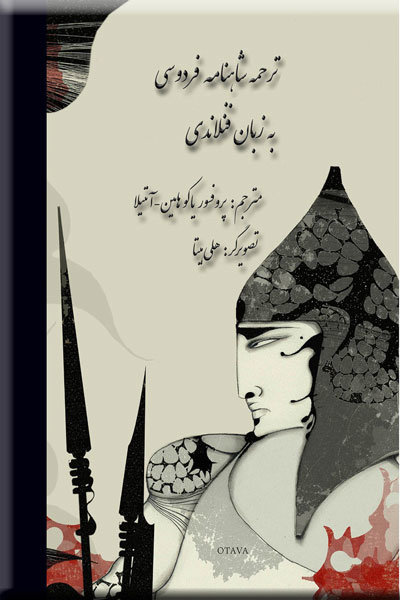Shahnameh captures readers’ imaginations: Finnish translator

I met Jaakko Hameen-Anttila, a professor of Arabic and Islamic studies in the University of Helsinki, on a cool April morning in Tehran a few days after his translation of the first half of Ferdowsi’s epic masterpiece Shahnameh into Finnish had been introduced in the metropolis.
By Manijeh Rezapoor
I met Jaakko Hameen-Anttila, a professor of Arabic and Islamic studies in the University of Helsinki, on a cool April morning in Tehran a few days after his translation of the first half of Ferdowsi’s epic masterpiece Shahnameh into Finnish had been introduced in the metropolis.
Hameen-Anttila said he believes the epic masterpiece makes a good read for a foreign audience since there is a philosophy of thoughts in the Shahnameh that captures the imaginations of readers.
“I think Ferdowsi also realized that he had a message but he also knew that in order to get people to read his works, he had to put them in the form of narratives, and that is why the stories in the Shahnameh are excellent”, he explained.
Hameen-Anttila considered the translation of the Shahnameh a demanding task; however, he said, “I want to emphasize that it was a work of love. I enjoyed doing it, although sometimes it was difficult and tiring. I received the best reward from the book itself and I became more familiar with Ferdowsi.”
As a schoolboy, he found it interesting to read the Shahanmeh. “I got interested in Persian literature when I was a school boy, when I was 14 or 15. Then I started reading and finishing books in English about Persian culture in general. My first acquaintance with Ferdowsi occurred when I started learning Persian by myself, by reading old text books from the 19thcentury. There were some stories in the appendices, and one of the textbooks contained an excerpt from Ferdowsi, the birth of Zal. That was the first thing I read in Persian.”
He continued that he finds the story of Zahhak, the most interesting story of the Shahnameh. “Everybody would say Rustam, Sohrab, Bijan and Manijeh. But in addition to these stories admired by every individual, my personal favorite is Zahhak who met Kaveh, and Ferdowsi’s ability to build his character. Zahhak starts as quite a nice young person, a young hero initially, and one could not say that he was bad in the beginning. He is ambitious and because of this, he transforms into a monster. This is also one of the best stories among the others.”
To the question why he chose to focus on Ferdowsi and not other classical poets, he said, “I have always been fascinated by the Shahnameh. But I have also translated literary poetry earlier such as works by Hafez and Rumi. But I wanted to translate the epic poetry, so that the Finnish people would be able to read different kinds of Persian literature, not just the ghazals of Hafez and Rumi, but also the Shahnameh. For me the Shahnameh has been the main work until now”.
Asked if his choice had something to do with Kalevala— the Finnish national epic compiled by Elias Lonnrot—he replied, “There are some similarities between the two epics, but I would have translated the Shahnameh anyway. It makes more sense to the Finnish people since we have our own epic stories; they might be somewhat different but there are also similarities.”
Hameen-Anttila also said that he chose the Persian version of the Shahnameh complied by the distinguished Iranian Shahnameh researcher, Jalal Khaleqi-Motlaq, as his original source, and translated Shahnameh from verse into prose. “I think this is what most other translators have done. That is, the translation is [the translator’s] personal conception. It is more or less word by word. Basically, it is a very faithful translation; I have just made the language Finnish.”
He next explained that the project took three years to complete. “I started to translate from the beginning and ended with the death of Rustam. A complete translation of the first half appears in the first volume.”
Hameen-Anttila translated a selection of Rumi’s Masnavi-ye Manavi into Finnish, as well as excerpts from the Divan of Hafez and the Rubaiyat of Omar Khayyam. He has also translated “Mantiq at-Tayr” (“The Conference of the Birds”) by Farid od-Din Mohammad ibn Ebrahim Attar.
He said he is planning to start work on the second half of the Shahnameh in a year or two, but that he would select one or two stories from the Shahnameh to translate into verse as his next projects.
RM/YAW
END

Leave a Comment